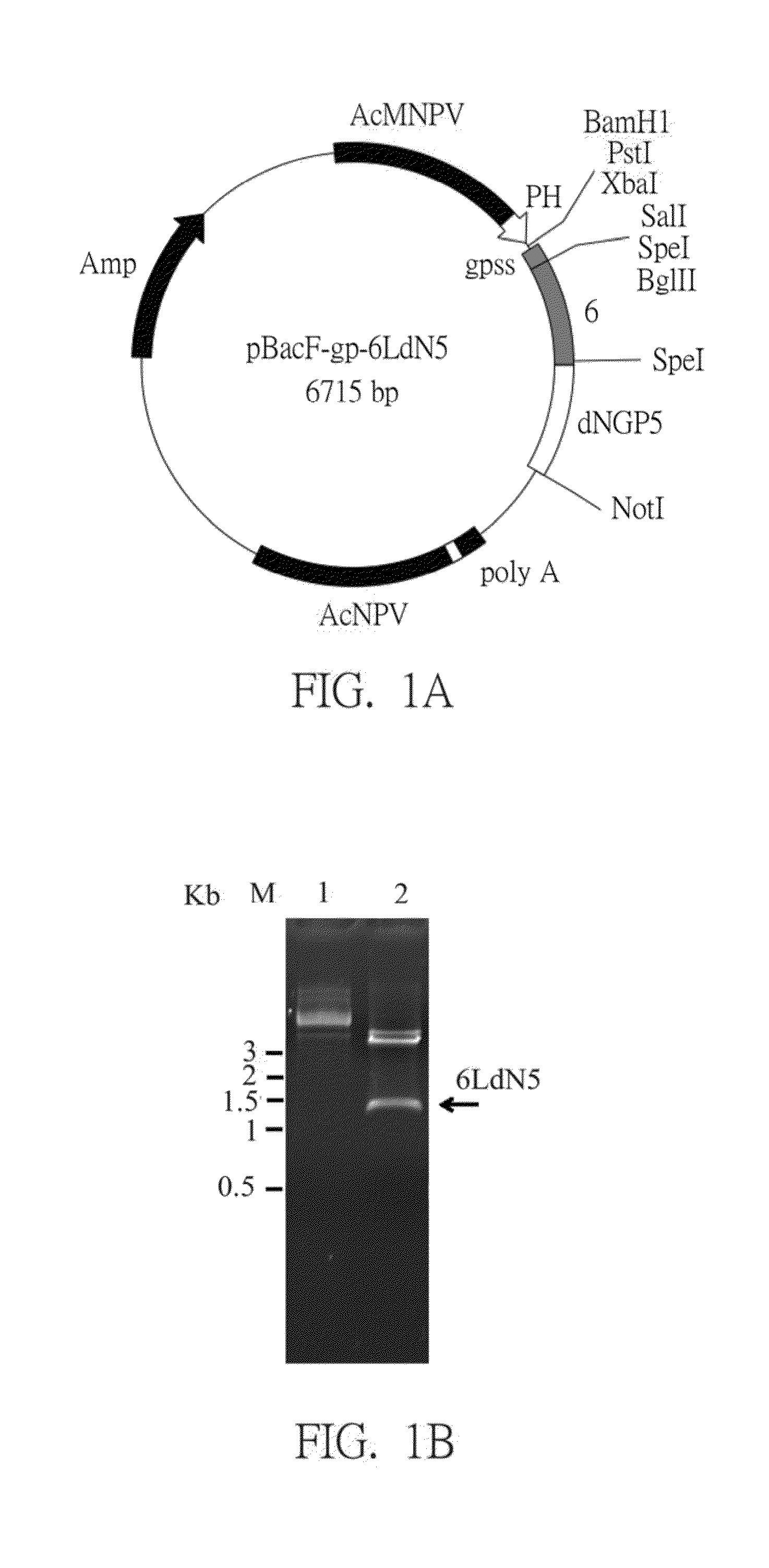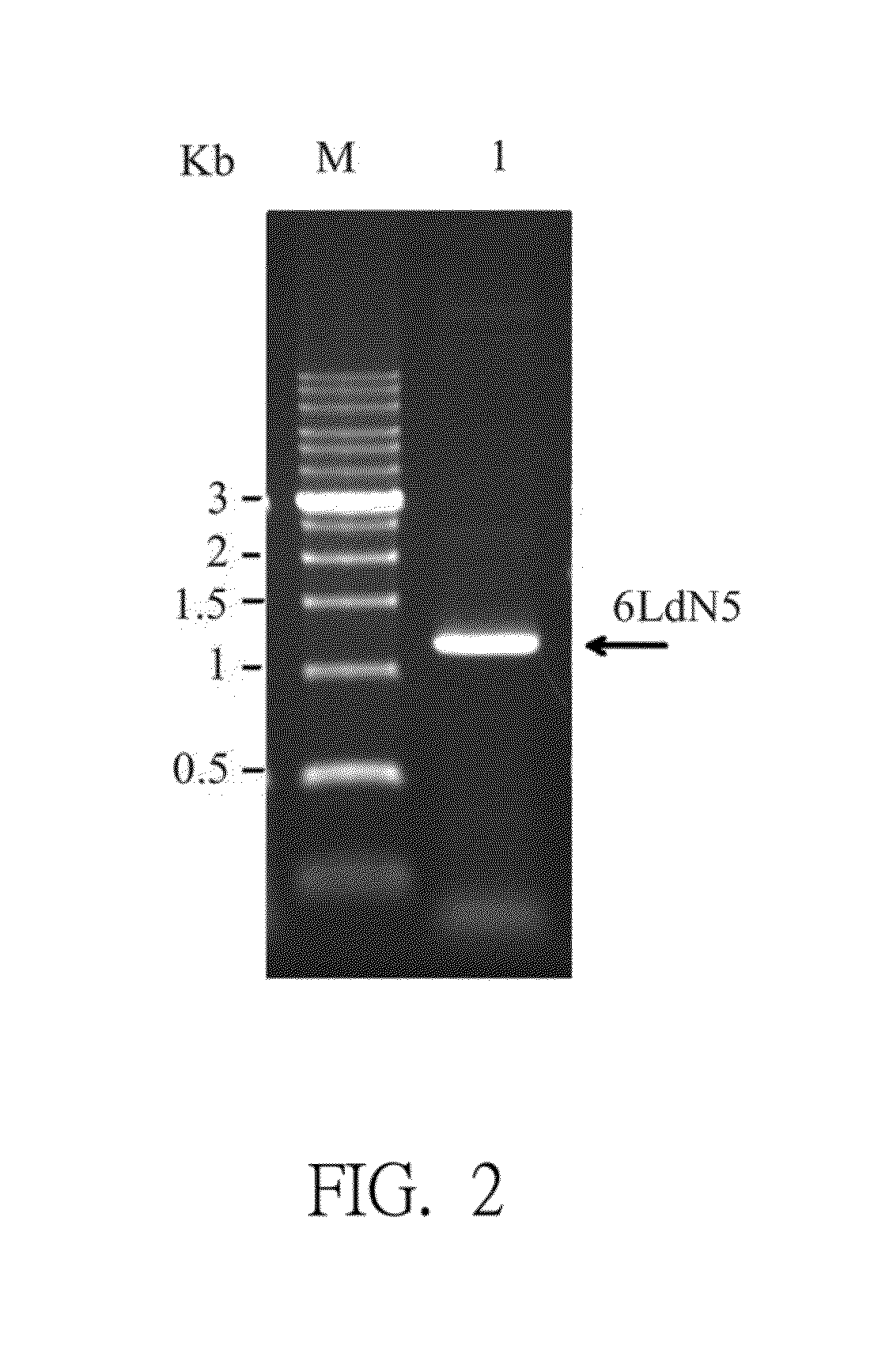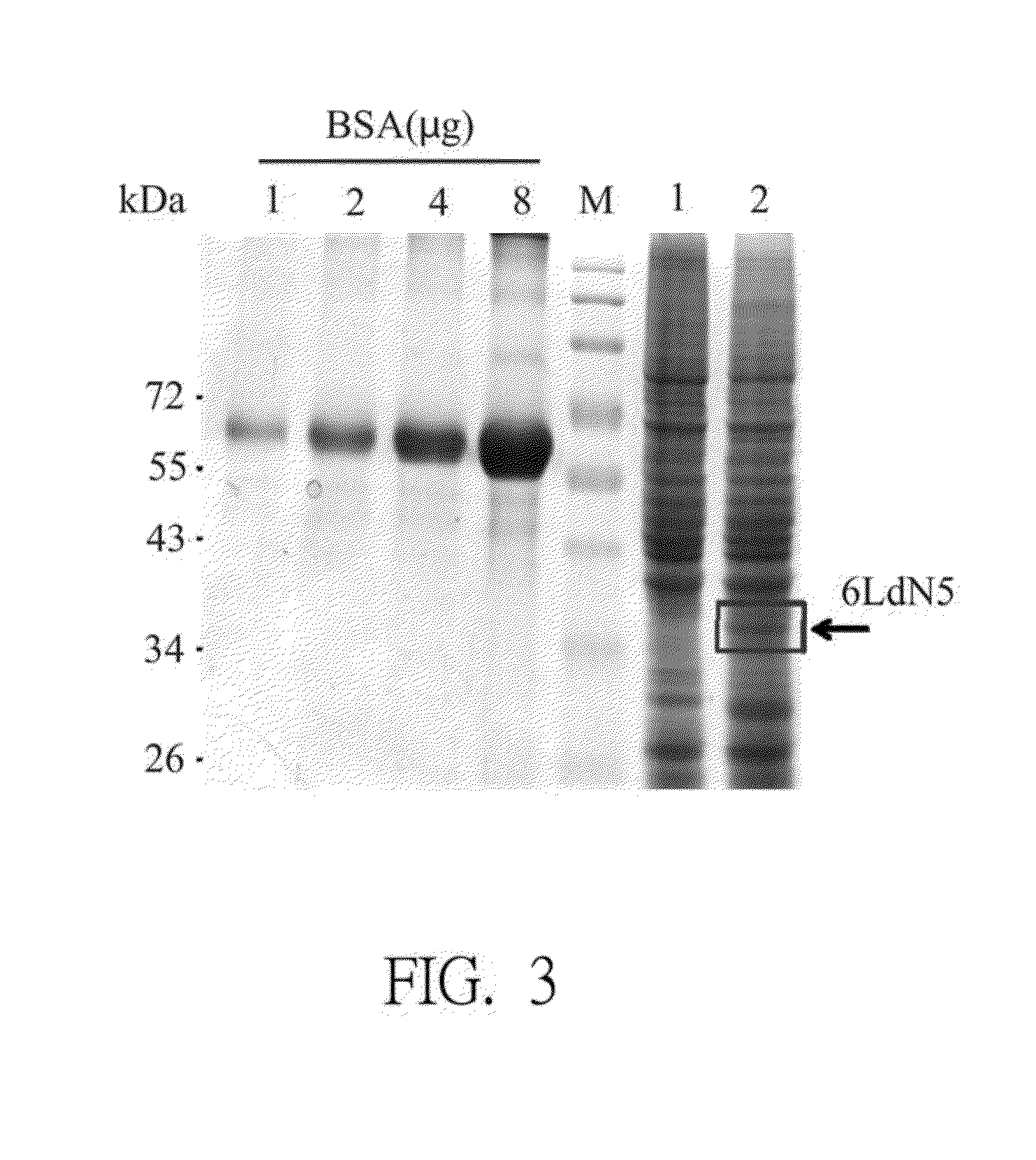Recombinant fusion antigen gene, recombinant fusion antigen protein and subunit vaccine composition having the same against infection of porcine reproductive and respiratory syndrome virus
a technology of recombinant fusion and antigen protein, which is applied in the field of recombinant fusion antigen gene, recombinant fusion antigen protein and subunit vaccine composition having the same, can solve the problems of respiratory tract syndrome, global outbreak, and great economic loss of the swine industry, and achieves better protection ability without the risk of virulent spread and virulent recovery. , the effect of increasing the expression yield of recombinan
- Summary
- Abstract
- Description
- Claims
- Application Information
AI Technical Summary
Benefits of technology
Problems solved by technology
Method used
Image
Examples
example 1
Establishment of Recombinant Viral Plasmid of pBacF-Gp-6LdN5
[0039]In this embodiment, the 6LdN5 recombinant fusion antigen gene was designed according to Genbank sequence accession number AF035409 that includes PRRSV ORF5 (the glycoprotein GP5) and ORF6 (the membrane protein M) published in the National Center for Biotechnology Information (NCBI).
[0040]Reference was made to the nucleic acid sequence of SEQ ID No.: 1. At first, a ORF6 (the 145th nucleotide to the 681th nucleotide) was designed before a ORF5 (the 694th nucleotide to the 1266th nucleotide), and a linker sequence (the 682th nucleotide to the 693th nucleotide) was interposed between the ORF6 and the ORF5. There were some recognition sites of restriction enzymes, Sal I (the 121th nucleotide to the 126th nucleotide), multiple-restriction enzyme site sequence (the 127th nucleotide to 144th nucleotide) and Not I (the 1288th nucleotide to 1295th nucleotide), are designed at two ends of fragments of the ORF5 and the ORF 6 resp...
example 2
Establishment of Recombinant Baculovirus Expression System
[0048]In the embodiment, Sf9 cell line (BCRC 60011; ATCC CRL-1711) from the fall armyworm (Spodoptera frugiperda) pupal ovarian tissue or High Five (abbreviated as Hi-5) cell line (BTI-TN-5B1-4)(for example, Invitrogen Co.) from pink shrimp (Trichoplusia ni) egg were used to establish the recombinant baculovirus expression system.
[0049]). 9 mL of Sf-9 or Hi-5 cell culture medium was added into 10-cm culture plates. Next, the cryovials of Sf-9 or Hi-5 cells were quickly thawed in the water bath at 37° C., and then the Sf-9 or Hi-5 cells were uniformly dispersed in the Sf-9 or Hi-5 cell culture medium respectively. Afterwards, the cell plates were cultured in the incubator at 28° C., and those cells were grown adherently and exhibited smooth and round shapes.
[0050]The Sf-9 cell culture medium was Grace's Insect cell culture medium, which contains 0.35 g NaHCO3, 3 g Lactalbumin hydrolysate, 20 mL yeastolate...
example 3
Evaluation of Expression of Recombinant Fusion Antigen Protein Using Recombinant Baculovirus Expression System
1. Isolation of Recombinant Fusion Antigen Protein
[0056]25 mL of 1×106 cells / mL of Hi-5 cell was seeded into a 125 mL culture flask, added with the recombinant baculovirus and cultured at 27° C. for 3 to 5 days. And then, the cells were harvested and the supernatant was removed by centrifugation at 4° C. and 10,000×g for 10 minutes. The cell pellet was broken by ultrasonic vibration, and the recombinant fusion antigen protein (or called BV-gp6LdN5) was isolated and quantified, which was further analyzed by SDS-polyacrylamide gel electrophoresis (SDS-PAGE) and Western blotting.
2. Evaluation of SDS-PAGE
[0057]The well-quantified sample protein was mixed well in the 4× Sample Buffer, boiled in the boiling water for 5 minutes, denatured by SDS and carried uniformly with negative charges. Glass plates were set up, pure water was fulfilled and all equipments were tested well. All r...
PUM
 Login to View More
Login to View More Abstract
Description
Claims
Application Information
 Login to View More
Login to View More - R&D
- Intellectual Property
- Life Sciences
- Materials
- Tech Scout
- Unparalleled Data Quality
- Higher Quality Content
- 60% Fewer Hallucinations
Browse by: Latest US Patents, China's latest patents, Technical Efficacy Thesaurus, Application Domain, Technology Topic, Popular Technical Reports.
© 2025 PatSnap. All rights reserved.Legal|Privacy policy|Modern Slavery Act Transparency Statement|Sitemap|About US| Contact US: help@patsnap.com



